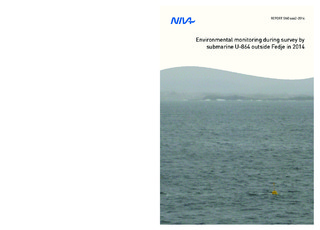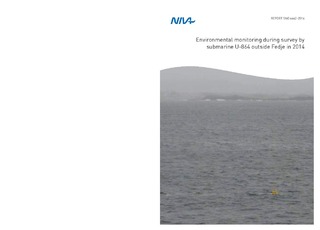| dc.contributor.author | Øxnevad, Sigurd | |
| dc.contributor.author | Jaccard, Pierre Franqois | |
| dc.contributor.author | Skogan, Odd Arne Segtnan | |
| dc.contributor.author | Dahl, Ivar Martin | |
| dc.contributor.author | Staalstrøm, Andre | |
| dc.contributor.author | Schaanning, Morten | |
| dc.contributor.other | Øxnevad, Sigurd - Project manager | |
| dc.date.accessioned | 2015-06-22T07:23:57Z | |
| dc.date.accessioned | 2015-06-26T10:43:41Z | |
| dc.date.available | 2015-06-22T07:23:57Z | |
| dc.date.available | 2015-06-26T10:43:41Z | |
| dc.date.issued | 2014 | |
| dc.identifier | 6642 | |
| dc.identifier.citation | NIVA-rapport. 50 p. Norsk institutt for vannforskning, 2014 | nb_NO |
| dc.identifier.isbn | 978-82-577-6377-0 | |
| dc.identifier.issn | 1894-7948 | |
| dc.identifier.uri | http://hdl.handle.net/11250/285782 | |
| dc.description | | nb_NO |
| dc.description.abstract | NIVA has done environmental monitoring during a survey by the wreck of submarine U-864 outside Fedje. The survey
was done in January 2014 on the vessel Geosund from DOF Subsea Norway. The main task for NIVA was to monitor if
the work by the submarine caused any spreading of contaminated sediment. This was done by monitoring of turbidity
around the wreck and analysis of mercury in water samples. A water current profiler was deployed in the mid area
between the two main wreck sections. NIVA also did measurements for mercury in air on the vessel.
The digging and dredging in the contaminated area caused some spreading of particles contaminated with mercury, but
the concentrations in the water samples were low (class II (good) or less). One sediment trap (10 m above the seabed)
recovered from a position ca 200m northwest of the operation center contained 4.2 mg Hg/kg dry weight. This is
classified as class V (very bad). The high concentration of mercury in the sediment trap shows that the digging and
dredging has caused spreading of contamination. Model calculations based on the measurements available from the
survey, showed that particle spreading will occur mainly towards northwest. Sediment fractions with size of more than
100 μm will settle within the 50 m model grid surrounding the operation. Particles with size 63 μm will not have travelled
far beyond 200 m northwest of the operation center, but fine clay fractions (20 μm) may be transported up to 1 km away.
It can be assumed that smaller sized particles will not constitute any significant fraction of the bulk sediment. | nb_NO |
| dc.description.sponsorship | DOF Subsea Norway | nb_NO |
| dc.language.iso | eng | nb_NO |
| dc.publisher | Norsk institutt for vannforskning | nb_NO |
| dc.relation.ispartofseries | NIVA-rapport;6642 | |
| dc.rights | Navngivelse-Ikkekommersiell-DelPåSammeVilkår 3.0 Norge | * |
| dc.rights.uri | http://creativecommons.org/licenses/by-nc-sa/3.0/no/ | * |
| dc.title | Environmental monitoring during survey by submarine U-864 outside Fedje in 2014 | nb_NO |
| dc.type | Research report | nb_NO |
| dc.date.updated | 2015-06-22T07:23:57Z | |
| dc.rights.holder | Norsk institutt for vannforskning / Norwegian institute for water research | |
| dc.subject.nsi | VDP::Matematikk og naturvitenskap: 400 | nb_NO |
| dc.subject.nsi | VDP::Mathematics and natural scienses: 400 | nb_NO |
| dc.source.pagenumber | 50 | nb_NO |
| dc.identifier.cristin | 1249683 | |
| dc.subject.keyword | Fedje / Fedje | |
| dc.subject.keyword | Kvikksølv / Mercury | |
| dc.subject.keyword | Turbiditet / Turbidity | |
| dc.subject.keyword | Ubåt U 864 / Submarine U-864 | |



